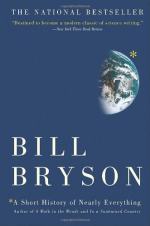
|
| Name: _________________________ | Period: ___________________ |
This quiz consists of 5 multiple choice and 5 short answer questions through Part 3, Chapter 11.
Multiple Choice Questions
1. Quarks are held together by gluons and make up what?
(a) Electrons and protons.
(b) Protons and neutrons.
(c) Neutrons and neutrinos.
(d) Electrons and neutrons.
2. Who suggested that mass and energy are actually the same thing?
(a) Charles Darwin.
(b) Albert Einstein.
(c) Joseph Lister.
(d) Thomas Edison.
3. What happened to the dinosaur bone discovered in New Jersey in 1789?
(a) It was sold to a museum in England.
(b) It had been permanently misplaced.
(c) It is part of a wealthy family's private collection.
(d) It is on permanent display at the Smithsonian.
4. In the 1700s, people were finding holes in theories. For example, if the thoughts on erosion were completely correct, then:
(a) All farmland would have been washed away.
(b) Icebergs would have eroded long ago.
(c) Sand would be ground to fine powder.
(d) There would be no mountains, only smooth hills.
5. What campaign did geologist Clair Patterson take on?
(a) Adding fluoride to drinking water.
(b) Removing chlorine from swimming pools.
(c) Removing lead additives from gasoline.
(d) Fortifying milk with vitamin D.
Short Answer Questions
1. About how many stars are visible to the naked eye from Earth?
2. The British astronomer Martin Rees hypothesizes that there could be an infinite number of what?
3. How do today's professional astronomers search for supernovae?
4. Which famous scientist was once an unknown patent clerk in Switzerland?
5. The fact that Pluto has a moon was not discovered until:
|
This section contains 251 words (approx. 1 page at 300 words per page) |

|




